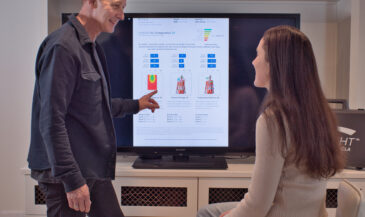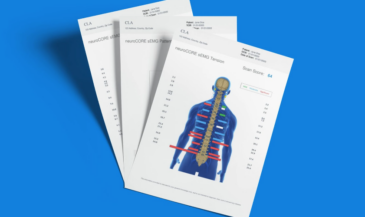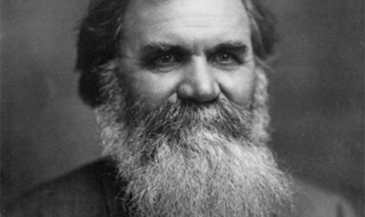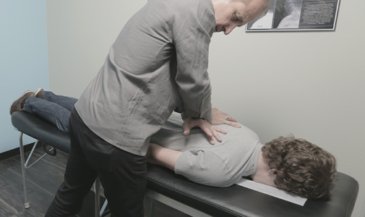Interest in the role stress plays with the dynamics of health has resulted in a proliferation of strategies designed to minimize or “manage” stress. To many people, the very term “stress” elicits a negative response. Yet, the notion that stress is an enemy we must resist or manage betrays a widespread misunderstanding of the nature of stress and how it affects our lives.
Hans Selye
Hans Selye pioneered investigations of the biological effects of stress in 1936 with the publication of his paper, “A syndrome produced by diverse noxious agents.” Since then, more than 100,000 articles and books have been written on the subject.
Selye describes stress as the nonspecific response to any demand. Experimental studies by Selye and other investigators revealed that when physical, chemical, or emotional demands were imposed on an animal, three stages could be identified which characterize the response:
1) Alarm reaction. The initial reaction to the stressor.
2) Stage of adaptation. The responses following the initial reaction.
3) Stage of exhaustion. When the limits of adaptation are exceeded, and the animal can no longer appropriately respond.
Dis-stress and eu-stress
Although many individuals have concluded that stress is inevitably destructive, this view is incorrect. As Selye noted, “Stress is not necessarily bad for you. It is also the spice of life, for any emotion, any activity causes stress…the same stress that makes one person sick is an invigorating experience for another…Complete absence of stress is incompatible with life since only a dead man makes no demand on his body or mind.”
Selye described two types of stress:
*** Dis-stress — from the Latin “bad,” as in dissonance.
*** Eu-stress — from the Greek “true” or “good,” as in eutonia.
Whether we experience a pleasant or unpleasant result from an event depends upon how our nervous system perceives, processes, and interprets that event. Selye wrote, “…the endocrine glands and the nervous system–help us both to adjust to the constant changes which occur in and around us, and to navigate a steady course toward whatever we consider a worthwhile goal.”
Stress and v.s.
More than 15 years before Selye’s historic publication, B.J. Palmer and J.H. Craven described a similar concept: concussion of forces. This term refers to the meeting of external invasive forces and internal resistive forces. Just as stress may be destructive or beneficial, concussion of forces may produce or reduce vertebral subluxation. The result is dis-ease or ease.
Craven wrote: “That which caused the normal cycle to become abnormal was a concussion of forces centering at some point in the spinal column causing a subluxation…tissues do not nor cannot express their normal function.”
Palmer stated that in the normal cycle, following Innate Intelligence is intellectual adaptation. Palmer quotes Webster’s definition of adaptation: “To make suitable; to fit; or suit; to adjust; alter so as to fit for a new use.” More than 60 years later, Selye wrote, “Every living being has a certain innate amount of adaptation energy or vitality.”
When a concussion of forces is corrective, Palmer noted the following changes: “Perversion changed to verification; abuse to proper natural use; abnormal interpretation to normal interpretation; distortion to healthful manifestation; corruption to correction.”
Although it is unlikely that Selye was familiar with the writings of Palmer and Craven, the similarities are striking: Stress and concussion of forces; eu-stress and ease; dis-stress and disease.
Health
The practical application of these concepts requires a working definition of health. The World Health Organization (WHO) defines health as “A state of complete physical, mental, and social well being and not merely the absence of disease or infirmity.”
In this context, Selye wrote, “The secret of health and happiness lies in successful adjustment to the ever-changing conditions on this globe; the penalties for failure in this great process of adaptation are disease and unhappiness.”
A key aspect of expressing our adaptive potential is keeping the nervous system free of interference by adjusting vertebral subluxations.
The realization of this objective is described in Palmer’s vision for the year 2000:
“Did you ever think what kind of a world this would be in a short time- -not later than 2000 A.D. — if the development of Chiropractic should continue until that time in proportion to the way it has developed during the last five years? By the time mentioned, we would see a race of giants, physically and mentally. There would be no chronic diseases of any kind; people would not know what tuberculosis is, except from history; no insane hospitals where men and women are confined as in a prison and made to suffer untold abuse…There would be no more penitentiaries because no crime would be committed by a sane man or woman; no poor houses because every man would be well and happy and have full possession of his faculties…”
“You are to prepare the way for future generations to follow. You are to blaze the way, blast the rocks, clear all rubbish of ignorance and prejudice, and open up the grand highway of truth.”
References
Selye, Hans: “The Stress of Life.” New York. McGraw Hill, Co. 1984.
Palmer, BJ; Craven, JH: “The Philosophy of Chiropractic.” Davenport, IA. Palmer School of Chiropractic. 1920.
World Health Organization. The first ten years of the World Health Organization. Geneva. 1958.
Palmer, BJ: History Repeats. Davenport, IA. Palmer School of Chiropractic. 1951.

























































































































































